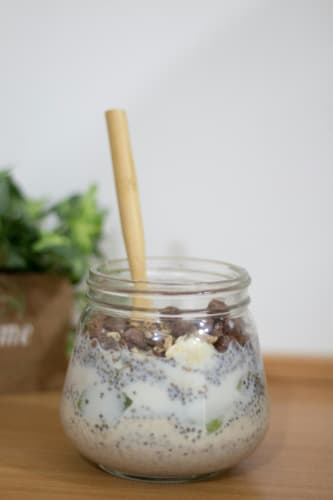Chamomile for Mosquito Bites: 7 Easy Ways to Get Relief
Chamomile, known for its calming properties, isn’t just for tea!
This gentle herb can provide quick relief from the itchiness, swelling, and redness caused by mosquito bites. Its anti-inflammatory and soothing compounds work wonders on irritated skin.
Here are 7 simple and effective ways to use chamomile for mosquito bites.
Mosquito bites: they’re puffy, round bumps that appear almost immediately after a pesky mosquito has its way with your skin.
The itch that follows can be maddening, and for some, the inflammation and redness can linger longer than expected.
While there’s no shortage of over-the-counter creams and lotions that provide temporary relief, many people are increasingly turning to natural remedies for reducing irritation.
One such remedy, endorsed by many, including my mom, is chamomile—an herb known for its soothing and anti-inflammatory properties. But does this gentle flower really provide relief for the discomfort caused by mosquito bites?
Let’s dive into how chamomile can help and explore seven easy ways to use it
Why Chamomile Works for Mosquito Bites
Chamomile is famous for its calming effects on both the mind and body. But it’s not just an ingredient for making relaxing tea; chamomile’s medicinal properties go far beyond promoting a good night’s sleep.
For centuries, it has been used in herbal medicine for its anti-inflammatory, antiseptic, and soothing benefits, making it particularly effective for skin conditions like mosquito bites.

When a mosquito bites, it injects saliva into your skin, which can trigger an allergic reaction. This reaction causes the typical redness, swelling, and itching. Chamomile contains compounds like apigenin and bisabolol, both of which have anti-inflammatory properties that can reduce swelling and calm irritation. Additionally, chamomile’s antiseptic qualities help prevent infection, which is especially useful if you can’t resist scratching the bites.
1. Chamomile Tea Compress
A quick and easy method to alleviate the irritation of mosquito bites is to use a chamomile tea compress. Chamomile tea is known for its calming and healing properties, and when applied topically, it can help reduce the redness and swelling caused by mosquito bites.
What You Need:
- A chamomile tea bag
- Warm water
Steps:
- Brew a cup of chamomile tea and allow the tea bag to steep for 3–5 minutes.
- Remove the tea bag and let it cool down to a comfortable temperature.
- Place the tea bag directly on the mosquito bite for 5–10 minutes. You should feel a cooling sensation, and the soothing properties of the tea will begin to calm the irritation.
- You can repeat this process several times a day to get consistent relief.
The chamomile tea bag not only provides immediate relief from the itch but also delivers the healing properties of chamomile directly to the affected area. This method is simple, fast, and highly effective for localized bites.
2. DIY Chamomile Paste
If you have dried chamomile flowers or can easily access fresh ones, you can create a potent DIY chamomile paste to apply directly to mosquito bites. The paste works by delivering chamomile’s anti-inflammatory compounds in a more concentrated form.
What You Need:
- Chamomile flowers (fresh or dried)
- Water
Steps:
- Crush a handful of dried chamomile flowers (or a few fresh ones) to release their oils and compounds.
- Mix the crushed flowers with a few drops of water to create a thick paste.
- Apply the paste to the mosquito bite and leave it on for about 10–15 minutes before rinsing off with lukewarm water.
This chamomile paste is a natural and effective way to combat the swelling and irritation associated with mosquito bites. The paste provides a direct application of chamomile’s soothing compounds, helping reduce inflammation and redness.
3. Chamomile Essential Oil
Chamomile essential oil is a concentrated form of the herb and offers the same soothing benefits, but with the added advantage of being easier to apply. It’s especially useful when dealing with mosquito bites on sensitive areas of the skin. You can mix chamomile essential oil with a carrier oil, such as coconut or almond oil, for gentle application.
What You Need:
- Chamomile essential oil
- A carrier oil (coconut, almond, or olive oil)
Steps:
- Mix 2–3 drops of chamomile essential oil with a teaspoon of your chosen carrier oil.
- Gently massage the oil mixture onto the mosquito bite, ensuring it’s well absorbed into the skin.
- The essential oil will reduce inflammation, provide a cooling effect, and alleviate the itching almost immediately.
Note: Essential oils are potent, so it’s important to dilute them with a carrier oil to prevent skin irritation. Always perform a patch test before applying the oil to larger areas of your skin.
4. Chamomile Ice Cubes
If you’re dealing with several mosquito bites or simply want a more refreshing way to relieve irritation, chamomile-infused ice cubes can be a great option. The cooling effect of ice combined with chamomile’s healing properties offers quick relief for itchy, inflamed bites.
What You Need:
- Chamomile tea
- An ice cube tray
Steps:
- Brew a strong cup of chamomile tea.
- Pour the tea into an ice cube tray and place it in the freezer to freeze overnight.
- Once frozen, gently rub a chamomile ice cube over the mosquito bite for instant cooling relief.
The ice will help numb the area, while chamomile continues to calm inflammation and reduce redness. This method is especially beneficial when dealing with multiple mosquito bites or when you want to cool down the area quickly.
5. Chamomile and Aloe Vera Gel
Combining chamomile’s anti-inflammatory properties with aloe vera’s cooling and healing benefits creates an incredibly effective remedy for mosquito bites. Aloe vera is known for its skin-healing qualities, and when paired with chamomile, it can speed up the recovery process.
What You Need:
- Chamomile tea (cooled)
- Fresh aloe vera gel
Steps:
- Brew chamomile tea and allow it to cool completely.
- Mix equal parts of cooled chamomile tea and fresh aloe vera gel.
- Apply the mixture to the mosquito bite and leave it on for 10–15 minutes before rinsing off.
This soothing combination helps to reduce redness, swelling, and the sensation of itching. Aloe vera enhances chamomile’s anti-inflammatory effects, while also moisturizing the skin and preventing dryness.
6. Chamomile Infused Bath
For those who find themselves covered in mosquito bites after an outdoor adventure, a chamomile-infused bath can provide full-body relief. Not only will this remedy soothe your skin, but it will also help calm your mind, making it perfect for an evening of relaxation.
What You Need:
- Chamomile tea bags (or loose chamomile flowers)
- A bathtub
Steps:
- Fill your bathtub with warm water.
- Place several chamomile tea bags or a handful of loose chamomile flowers into a cloth bag or directly into the water.
- Soak in the chamomile-infused bath for 15–20 minutes to relieve itching, calm inflammation, and relax your muscles.
This is a great method for when you’ve been bitten in multiple places, as it allows chamomile to work its magic on your entire body. It’s both therapeutic and effective.
7. Chamomile and Honey Spot Treatment
Honey is not only a natural humectant but also has antibacterial properties that can prevent infections caused by scratching mosquito bites. When combined with chamomile tea, this duo can offer a soothing and healing spot treatment for bites.
What You Need:
- Chamomile tea (cooled)
- Honey
Steps:
- Brew chamomile tea and allow it to cool.
- Mix a teaspoon of honey with a few drops of the cooled chamomile tea.
- Dab the mixture onto the mosquito bite using a cotton swab and leave it on for 15–20 minutes.
- Rinse off with lukewarm water.
This treatment not only helps reduce inflammation but also promotes faster healing, while honey keeps the skin moisturized and free from infection.
Additional Benefits of Chamomile for Skin Care
Chamomile’s benefits don’t stop with mosquito bites. Here are some other skin conditions chamomile can help with:
- Acne: Chamomile’s anti-inflammatory properties help calm redness and swelling caused by acne. It can also reduce the appearance of scars over time.
- Eczema: Chamomile’s soothing effects make it a great option for reducing itching and inflammation associated with eczema.
- Sunburns: Apply chamomile tea compresses to cool and calm sunburned skin.
- Minor Burns: Chamomile can help speed up the healing process and reduce inflammation for minor burns.
Precautions
Chamomile is generally safe for most people, but it’s important to be cautious, especially if you have allergies to ragweed or related plants. If you’re using chamomile essential oil, always dilute it with a carrier oil and perform a patch test to ensure there are no adverse reactions.
Conclusion
Mosquito bites don’t have to ruin your day. With chamomile’s natural healing properties, you can say goodbye to itching and irritation in a matter of minutes. Whether you choose to use chamomile in the form of tea bags, essential oils, or DIY pastes, these seven remedies provide easy and effective ways to relieve mosquito bite discomfort. With its soothing, anti-inflammatory, and antiseptic benefits, chamomile is truly a one-stop solution for naturally treating mosquito bites.
Next time you’re dealing with the discomfort of mosquito bites, reach for chamomile and enjoy the soothing relief it offers—no chemicals required!











Leave a Reply